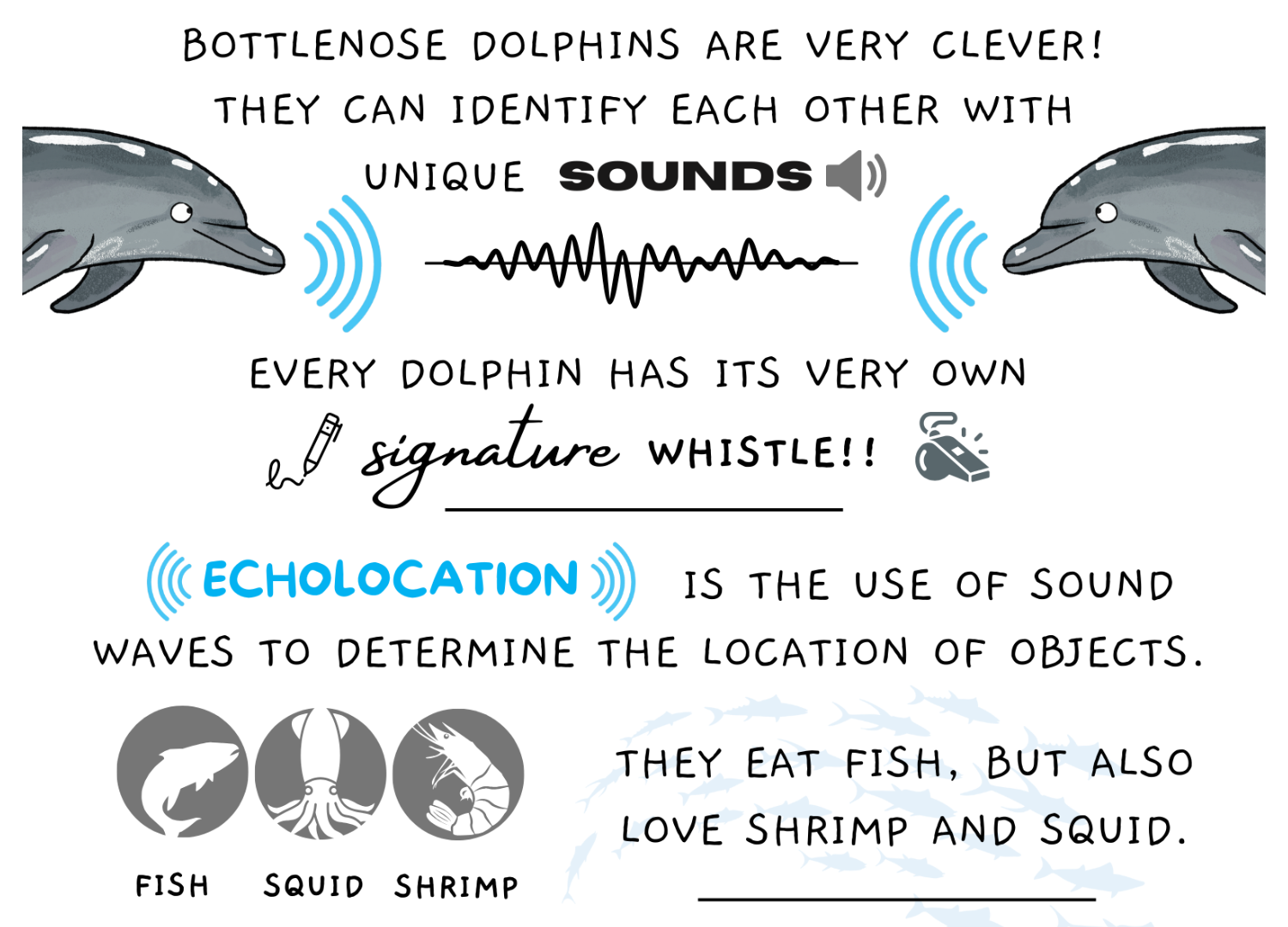
Q. How can we recognise you from the other dolphin species?
A. We are the large grey dolphins! People sometimes confuse us with common dolphins, but they are quite a bit smaller than us with light coloured bellies and a distinctive yellow band down their side.
Q. You breathe air like humans? What else do humans and dolphins have in common?
A. Yes, we’re mammals too! Dolphins are warm-blooded animals which give birth to live young, providing motherly care and producing milk. We even have hair – baby dolphins (calves) have little whiskers on their face, which they lose as they grow up.
Q. How do dolphins sleep?
A. We sleep by taking short naps, both during the day and night. We can shut off half of our brain for sleeping, while the other half stays awake to come up for air and watch out for danger. We need to make sure we don’t completely fall asleep, or we would drown. If you see us huddled together and swimming slowly, it probably means we are taking a nap.

Q. What do you like to eat?
A. Squid, mackerels, and any other fish small enough to swallow whole are all on the menu. Nothing too spiky though – there is no chewing involved when we eat! Our food provides us with the water and nutrition we need to survive.
Q. Where are bottlenose dolphins found?
A. There are 3 big areas in New Zealand where you can see us: the Northeast Coast, Marlborough Sounds, and Milford Sounds. Groups of bottlenose dolphins, known as pods, tend to stay within a particular area. Some bottlenose spend lots of time close to shore and can often be spotted from the beach, while others prefer to be far out in deeper waters.
Q. Are there bottlenose dolphins outside of New Zealand?
A. Bottlenose can be found almost all over the world, except in the Arctic and Antarctic where it is too cold for us.
Q. What is the biggest challenge you face?
A. We often choose to interact with boats, but when there is too many it makes things harder for us. Boat traffic creates so much noise, it affects our ability to communicate and hunt for food. Propellers can be dangerous for marine mammals, boats need to use caution and slow down if approaching us.
We are a protected species, so there are some rules for interacting with marine mammals which you should know about before engaging with us on or in the water.
Thanks to the TriOcean team for collaborating with us to produce this 'interview' and creature card.
.png)
Download the Bottlenose Dolphin Card to print & display
Find more cards & other formats in this Google Drive folder.
Additional Learning Resources for kids
Young Ocean Explorers Dolphin Video: youngoceanexplorers.com
Project Jonah Marine Mammal Activities & Resources: projectjonah.org.nz
TriOcean's Fin Identification Catalogue for Far North Bottlenose Dolphins: trioceans.org
.png)